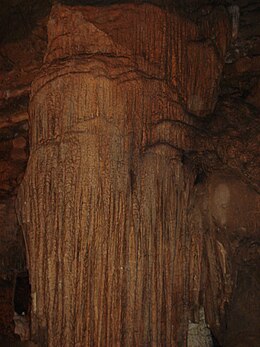The Daily Telegram
November 5, 1908
All the grades in the city schools observed Mound Day this afternoon for half an hour. Appropriate programs were rendered and funds raised for the preservation of the mound at Moundsville.Mr. McConkey presided over the high school and Superintendent Burdette gave an historical account of the mound. Miss Bertha Bland and Frank White, high school representatives, read sketches. There was patriotic music. The fund will be deposited in the bank to be drawn on by State Treasurer Ogdin.The Clyclopedia Americana says of the mound:"One of the most interesting mounds of North America is that know as Grave Creek Mound located in Moundsville, West Virginia. The Mound is situated on an artificial truncated mound, some 70 feet high and 900 feet in circumference at its base. The mound was built by a race superior and previous to Indians, and is the most notable mound in the Ohio Valley. Its cubic contents are equal to the third pyramid of Mycerinus, but was heaped up by a people destitute of the knowledge of iron, and who had no domestic animals or machinery to aid them. They were evidently people like the Egyptians, ruled by some one monarch, who was able to combine vast numbers in the erection of one structure, and at the same time, able to provide them with food in abundance. The mound-builders cultivated the soil like the Egyptians, and had maize for their food, as the date and leek and onion supplied the wants of the laborers on the Nile. No Indian was ever known to toll in this manner. No government existed among the Indians that could bring them so much servitude. The authority of a chief or sachem is too slender a thread for such a people. It must be remembered that in Egypt to build one of the pyramids required the labor of 360,000 men for 20 years. This Mound was visited by white men at a very early date, for, in 1818, on of the large trees growing on the Mound bore the date of 1734, and several names cut in the bark were yet distinguishable. Tomlinson, the owner of the Mound, was induced - by his neighbors and friends in Wheeling - to open the Mound, which he did in 1838. From the north side he excavated toward the centre an adit ten feet high and 7 feet wide along the natural surface. At the distance of 111 feet he came to a vault that had been excavated in the earth before the Mound was commenced; 8 feet by 12 feet square and 7 feet in depth. Along each side, and across the ends, upright timbers had been placed, which supported timbers thrown across the vault as a ceiling. Those timbers were covered with loose unhewn stone, common in the neighborhood. The timbers had rotted, and the stone tumbled into the vault. In this vault were two human skeletons, one of which had no ornaments. The other was surrounded by 650 ivory beads and an ivory ornament about six inches long. A shaft was also sunk from the top of the Mound to meet the other. At 34 feet above the first or bottom vault, was found another, similar to the first. In this vault was found a skeleton which had been ornamented with copper rings, plates of mica, and bone beads. Over 2,000 discs cut from shells were found here. The copper rings, or bracelets found, weighed about 17 ounces."






